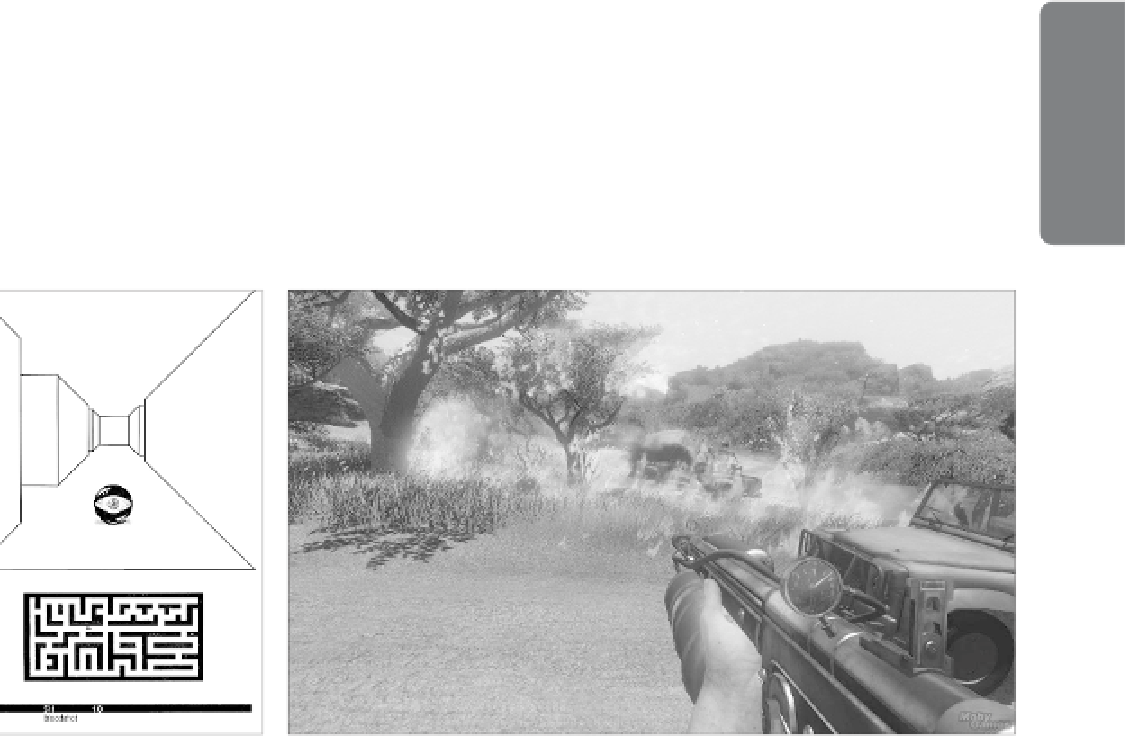Game Development Reference
In-Depth Information
3D SHOOTERS
3D shooting games such as those in the
Halo
and
Half-Life
series have become so
successful that to a great many younger gamers they are the epitome of the entire
medium. Never mind that sports games are more popular than shooters on console
machines, and strategy games are more popular on home computers (Entertainment
Software Association, 2009); 3D shooters are at the cutting edge of what game hard-
ware can do, and so they have the most dramatic graphics and get the most press.
Figure 13.3
indicates just how far 3D shooters have come, from
Maze War
, an early first-
person shooter for the Xerox Star workstation, to the recently released
Battlefield 1943
.
FIGURE 13.3
Maze War
and
Battlefield 1943
3D shooters are more realistic than 2D shooters, often presenting familiar, or at
least recognizable, worlds. In first-person shooters, the physics of the game is much
more like that of the real world. Gravity works correctly (for the most part), sound
diminishes with distance, objects cast shadows, and collisions are modeled with a
fair level of accuracy. Some of these games, such as Electronic Arts'
Black
, also
implement deformable environments, in which the landscape actually changes
shape in response to explosions and other events.
3D shooters use either a first-person perspective (the
first-person shooter
or
FPS
), or a
third-person perspective, and many now offer both. The first-person perspective is
sometimes reserved for the view through a rifle's scope or sights and cannot be
used while the avatar is moving. The “Camera Models” section discusses these per-
spectives and their effect on the player's experience.
3D shooters may be further subdivided:
Rail-shooters
are so-called because players fight through an enclosed environ-
ment that, like a railroad track, has few side branches; the player has few choices to


